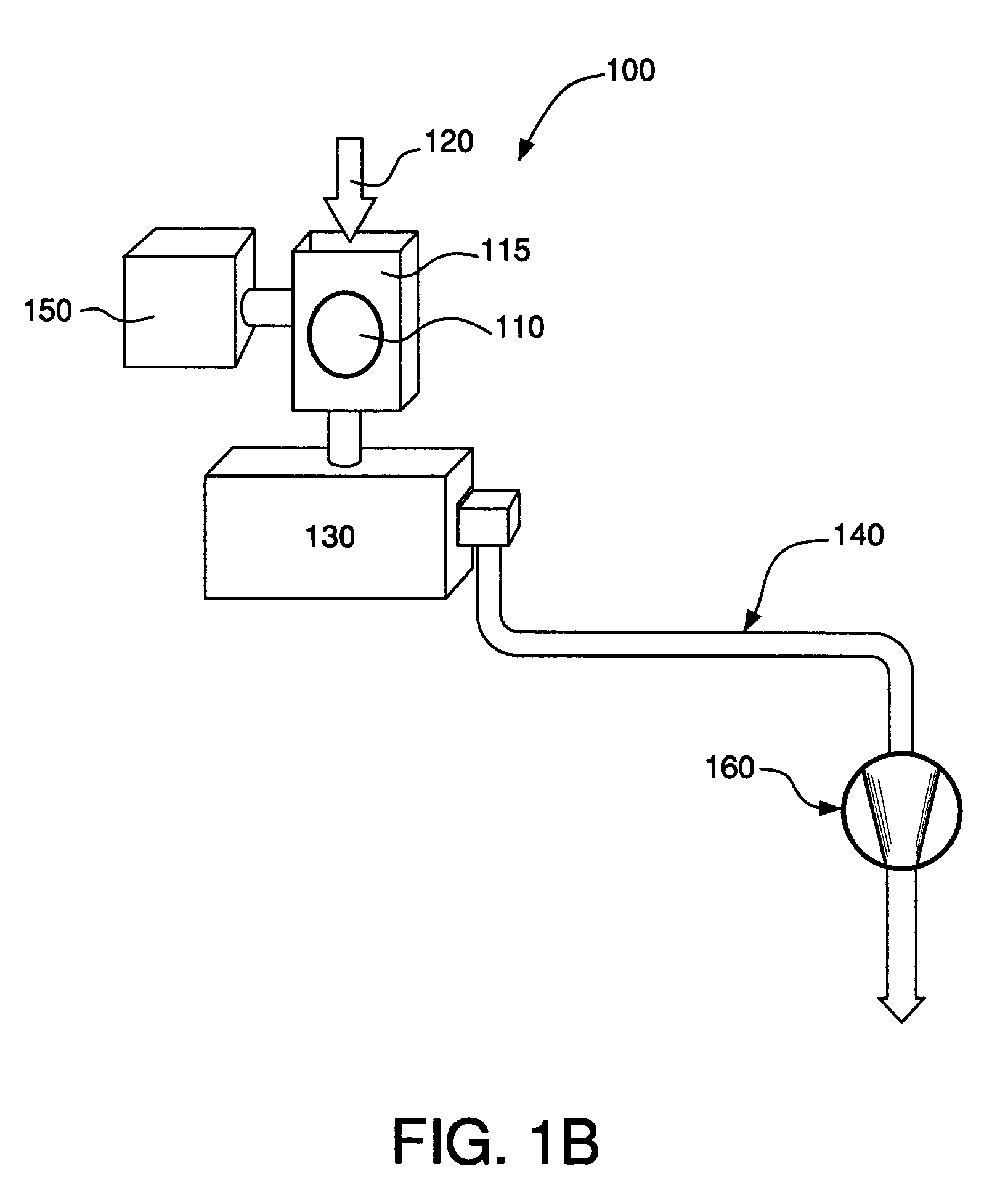Method for etching high dielectric constant materials and for cleaning deposition chambers for high dielectric constant materials
a technology of high dielectric constant materials and deposition chambers, which is applied in the direction of cleaning hollow articles, energy-based chemical/physical/physico-chemical processes, coatings, etc., can solve the problems of high leakage current and device failure, no process details for plasma cleaning of ald chambers, and material electric breakdown of materials
- Summary
- Abstract
- Description
- Claims
- Application Information
AI Technical Summary
Benefits of technology
Problems solved by technology
Method used
Image
Examples
example 1
Plasma Etching / Cleaning of Al2O3 Samples
[0087]Since power is one of the key processing parameters in plasma etching / cleaning, we evaluated power dependence of Al2O3 etching by BCl3 plasma. The results are listed in Table 24 below.
[0088]
TABLE 24RF power dependence of Al2O3 etching by BCl3 plasmaPower densityPressureAl2O3 etch ratePower (W)(W / cm2)(mTorr)(nm / min)Vbias (V)500.275000.0161000.555003.0352001.105009.858
[0089]Apparently there is a threshold power density of 0.55 W / cm2 or threshold Vbias of 35 V for etching Al2O3. Higher power density and higher Vbias resulted in higher etch rate.
[0090]Next, we investigated chamber pressure dependence of Al2O3 etching by BCl3 plasma. The results are listed in Table 25 below.
[0091]
TABLE 25Chamber pressure dependence of Al2O3 etching by BCl3 plasmaPower densityPressureAl2O3 etch ratePower (W)(W / cm2)(mTorr)(nm / min)Vbias (V)1000.55507.2911000.555003.0351000.5510000.84
[0092]A higher etch rate was achieved at a reduced pressure. There are two facto...
example 2
Plasma Etching / Cleaning of HfO2 Samples
[0097]At 500 mTorr pressure, etching of HfO2 was achieved at all power levels between 50 and 200 W. The results are listed in Table 27 below.
[0098]
TABLE 27BCl3 plasma etching of HfO2Power densityPressureHfO2 etch ratePower (W)(W / cm2)(mTorr)(nm / min)Vbias (V)500.275001.614500.275001.4161000.555004.7342001.1050014.763
example 3
Plasma Etching / Cleaning of ZrO2 Samples
[0099]Several experiments were conducted with ZrO2 samples using 500 mTorr pressure and various power levels between 50 and 200 W. The results are listed in Table 28 below.
[0100]
TABLE 28BCl3 plasma etching of ZrO2Power densityPressureZrO2 etch ratePower (W)(W / cm2)(mTorr)(nm / min)Vbias (V)500.275000.3161000.55500−3.8*321000.55500−2.5*452001.105007.165*The film became thicker after one minute exposure to the plasma.
[0101]FIG. 3 shows the relative comparison of BCl3 plasma etch rates of high-k materials HfO2, Al2O3, and ZrO2 at 500 mTorr chamber pressure and 1 W / cm2 RF power density. It can be seen that HfO2 has the highest etch rate, and ZrO2 has the lowest etch rate among the three high-k materials.
[0102]Examples 4 and 5 illustrate BCl3 thermal etching / cleaning of high-k materials. FIG. 4 is a schematic of the experimental setup for examples 4 and 5. In this reactor chamber 300, RF power 310 can be applied on the top electrode 320, and the lower ...
PUM
| Property | Measurement | Unit |
|---|---|---|
| dielectric constant | aaaaa | aaaaa |
| temperature | aaaaa | aaaaa |
| pressure | aaaaa | aaaaa |
Abstract
Description
Claims
Application Information
 Login to View More
Login to View More - R&D
- Intellectual Property
- Life Sciences
- Materials
- Tech Scout
- Unparalleled Data Quality
- Higher Quality Content
- 60% Fewer Hallucinations
Browse by: Latest US Patents, China's latest patents, Technical Efficacy Thesaurus, Application Domain, Technology Topic, Popular Technical Reports.
© 2025 PatSnap. All rights reserved.Legal|Privacy policy|Modern Slavery Act Transparency Statement|Sitemap|About US| Contact US: help@patsnap.com



